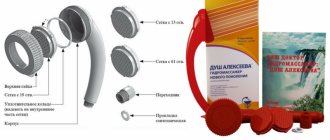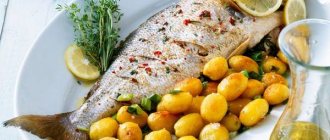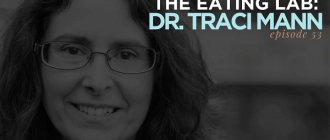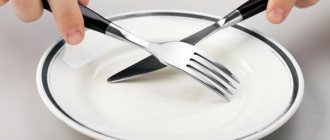1
3157
Dry fasting is practiced to prevent various diseases. Its effectiveness, in contrast to diversion or combined fasting, is noticeably higher, because the body falls into uncomfortable conditions and is forced to carry out the process of breaking down its fats much more actively, as well as get rid of pathological tissues. But this diet is very strict, it puts a strain not only on the human body, but also on his psyche.
Without the supervision of a specialist, this method is dangerous; at home it is not recommended to fast for more than 3 days. It should be borne in mind that the dry fasting method involves the exclusion of not only food, but also the consumption of any liquid (including enemas, as well as other procedures related to water).
The body cannot completely switch to internal nutrition in a short time (less than two days), so dry fasting is often used at the beginning of regular fasting. It is used in the first stages of colds, but it is important to do this only if you are in good general health. According to the recommendations of experts, people who suffer from liver disease, kidney disease, or are simply weakened from any illness should not resort to this diet.
What is dry fasting?
Dry fasting is a type of abstinence from food when the consumption of not only food, but also liquid is prohibited. Some practitioners recommend refraining from any exposure to moisture: washing your hands, brushing your teeth, taking a shower, walking in the rain.
What is the meaning of such a technique? By limiting our body without food and moisture, we force it to work exclusively in autonomous mode. This approach can get rid of a number of serious diseases:
- oncology
- heart diseases
- diabetes
- autoimmune diseases
- psychical deviations
On the other hand, removing toxins from the body is always associated with certain risks. Due to insufficient water, cells with harmful substances cannot be properly isolated from surrounding organs. If it gets into the blood in excess, there is a chance of harming internal systems. You should also approach the process of entering dry fasting carefully.
You can learn more about dry fasting here. The body needs to be prepared for the upcoming stress. This will avoid a lot of problems. Losing weight in this way is a rather controversial issue.
You may also be interested in the article “Dry fasting method according to Shchennikov - myth or reality”
Before using any type of fasting, consult your doctor! Improper use of one or another technique can lead to irreparable consequences. We do not take any responsibility for your actions.

Contraindications
Due to its complexity and ambiguity, doctors prohibit dry fasting for people with the following problems:
- malignant tumors and neoplasms
- cirrhosis of the liver, as well as severe hepatitis
- severe underweight
- tuberculosis in late stages
- cardiac dysfunction
Cleansing the body for health

Dry fasting is a complete refusal of food and water for a day or more. To switch to this method you need to have strong motivation and inner spirit.
If you are set on therapeutic fasting, then you need to properly prepare for it:
- During the week, eat light meals containing more protein, but less carbohydrates and fats.
- Don't overeat, drink plenty of water.
- Have dinner no later than 18:00.
- Reduce your salt intake.
What happens in the body during dry fasting?
- A wellness program is launched. The body directs all its forces to the recovery of the diseased organ.
- Mental abilities are activated.
- There is a cleansing of toxins, mucus, and fats that are present in the blood.
- Fats deposited in the body’s “storages” are burned, and a person loses extra pounds for a long time.
- Tumors, diseased cells, and neoplasms are broken down.
- A person’s thoughts become peaceful, positive, it becomes easy for him to understand another person and forgive offenses.
What is distinctive about the way out of dry malnutrition?
Many experts note that breaking out of dry fasting is much more important than the process of abstaining from nutrients itself. Why?
At the end of the practice, the body becomes fresh and clean. Therefore, you should only consume foods without pathogenic microflora. By neglecting this, the body may simply not be able to withstand the load, which is dangerous to health.

Modern nutritionists take the position that greater attention should be paid to the correct way out of malnutrition. Ignorance of how internal mechanisms work can have a detrimental effect on a person.
Doctors' opinion
From a medical point of view, this method has many complaints. Not all doctors approve of it, since during the fasting period unpleasant phenomena may appear in the form of dizziness, sleep disturbances, performance problems, dry skin and mucous membranes.
But doctors see the main harm in dehydration of the body and thickening of the blood. And thick blood can lead to fragility of blood vessels, death of capillaries, and a person may suffer from stomach pain.
With prolonged abstinence, euphoria occurs, but it is not real, but is caused by the release of insulin and adrenaline into the bloodstream, which creates a risk of developing diabetes in the future.
Therefore, when starting fasting, look at all the pros and cons, consult with a doctor whom you especially trust. This extreme method leads, on the one hand, to health improvement, and on the other hand, to health problems.
Contraindications:
- Varicose veins;
- Hypertension;
- Low body weight;
- Problems with the kidneys and pancreas;
- Headaches, migraines;
- Anemia, impaired absorption of nutrients;
- Childhood;
- Pregnancy.
General rules and recommendations
According to experts in the field of nutrition and health, it takes twice as long to recover from dry hunger as the treatment period itself. If you fasted for 7 days, the recovery period should last up to two weeks. You must strictly adhere to all recommendations.
This is what Ruslan Tsvirkun says:

Let's start with the view of traditional medicine. This approach is considered very controversial, because consuming animal products can cause serious harm to health. Let's consider options for breaking fasting depending on the number of days of not eating.
For a day
The way out of daily dry hunger should be as follows:
You need to end your fasting at the same time that you started entering. Since the main healing effect occurs at night, the end of the process should be no later than 8 o’clock in the morning. For the first 12 hours, you need to focus on water consumption.
Experts recommend drinking 8 glasses of water in the first two hours after waking up. You should drink very slowly, concentrating on each sip. The last drop should be ingested 14 minutes after the start. Afterwards you need to take a warm shower or herbal bath.

- At 12 noon you need to drink broth with a high protein content. Usually fish is recommended, without the use of vegetables and seasonings. It is forbidden to eat flour, including bread.
- At 14:00 it is recommended to start consuming fermented milk products. Kefir or whey will do. Listen to your body, do not allow unpleasant sensations.
Starting from 15-16 hours you are allowed to switch to traditional food without the use of salt and sugar. You need to eat in small portions and chew it thoroughly.
For a three days
The regimen for 1 day is the same as for daily fasting. Starting from day 2, the menu should be composed as follows:
- 8.00 - green tea with herbs or kefir, buckwheat porridge cooked in water.
- 14.00 - fresh fish soup (salmon, pollock, greenling, flounder), vegetable salad, compote, spoon of honey
- 18.00 - buckwheat porridge, boiled beets, herbal tea
- 22.00 - warm tea with hawthorn, honey
Diet for day 3:
- 8.00 – fresh fruit juice, fruit salad/rice porridge
- 14.00 - lean borscht (without meat), chopped vegetables (carrots, beets)
- 18.00 – fish baked in foil (pollock, flounder), vinaigrette

On the third day, adding a little salt is allowed. Portions should be made according to your appetite, but do not overeat!
For five days
The way out of a five-day fast includes the diet of the days described above. From day 4 the menu changes.
- 9.00 – dried fruit compote (no sugar)
- 12.00 – buckwheat on water
- 15.00 - fish soup (terpug, salmon, pollock), cabbage salad, glass of kefir
- 18.00 - plate of raw fruits (tomatoes, cucumbers), greens
- 21.00 - milk, kefir
Diet for day 5:
- 8.00 - oatmeal with dried fruits
- 13.00 - boiled vegetables (carrots, beets, cabbage), freshly squeezed juice
- 17.00 - vegetable soup, 1-2 apples
- 22.00 — fermented baked milk, milk 1 glass
It is worth breaking a seven-day fast according to the above scheme. Starting from day 6, switch to traditional nutrition. The daily diet should consist of 50% fresh vegetables and fruits. Stick to this diet for the next two weeks.
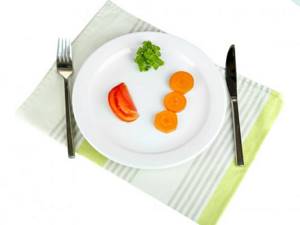
Restoration according to Goltis
Vuksta Vladimir Ivanovich (Goltis) is a famous extreme sports enthusiast, traveler and author of numerous methods for improving the health of the body. According to his personally developed “Healing Impulse” system, dry fasting should be practiced for 1, 3, 7 days. You can learn about the Goltis technique from the article at the link
There are 4 lessons lasting 15 minutes available for free on the Goltis Academy website. 50,000 people have already applied the technique on themselves and have achieved significant results in changing their health for the better. As a gift, you will receive a nutrition chart to record your results.
It is safest to practice dry fasting according to Goltis under the supervision of a specialist.
Recovery after a one-day fast:
- day. Freshly squeezed juices, raw fruits
- day. In the morning juice and fruit. In the afternoon, add raw salad without vegetable oil.
- day. Vegetable soup without using potatoes or porridge.

The right way out of a three-day fast:
Products are added to the diet systematically over a period of 11 days.
- Pure water, herbal infusions, vegetable juices
- Citrus fruits, berries, honey, pollen
- Dried fruits, milk, vegetables
- Nuts, salads allowed
- Vegetable soups without potatoes, porridge, bread
- All legumes, sour cream, cottage cheese
- Mushrooms, eggs, cheese
- Seafood
- Fish
- Bird
- Meat products
During the 11-day period, the body has time to fully recover and return to normal mode. Reducing the time frame is unacceptable.

Disadvantages of the diet
Official medicine opposes this technique, explaining that the diet causes harm to all systems of the body. The negative impact manifests itself in different ways:
- if you don’t drink water for 7 days, it can lead to death, and if it’s hot outside, then after 3 days irreversible consequences will occur;
- for diabetics, 1-2 days of dry fasting will end in a hypoglycemic coma, from which not everyone can recover;
- immunity decreases due to increased susceptibility to harmful microorganisms;
- on the third day, the activity of digestive enzymes in a person intensively and quickly decreases, which then leads to atrophy of the mucous membrane of the small intestine;
- development of diabetic ketoacidosis;
- nerve cells that have not received the required amount of glucose during the day die;
- muscle tissue is broken down.
Ketoacidosis is a dangerous consequence of the body's shock resulting from fasting. To debunk the myth, a number of doctors conducted an experiment, during which it was possible to establish that toxins are formed in the body at a time when a person does not consume water and food. When you diet, stones appear in the gall bladder, but are not removed from it.
The scientific basis is that cleansing the body is impossible without additional fat intake.
The negative impact consists not only of stress on organs and systems and a general deterioration in health, but also of the instability of the result. One third of the weight lost is muscle.
What to remember
The process of recovery from dry starvation is a very important process. Most experts believe that more attention should be paid to the recovery time of the body after the process itself.
It is forbidden to rush and violate basic principles. There is a risk of getting exactly the opposite results.
Thank you for your attention. Have you, dear reader, practiced the techniques described? Share your observations below. Don't forget to subscribe to the newsletter, there's a lot of interesting things ahead.
See you on the blog pages!




